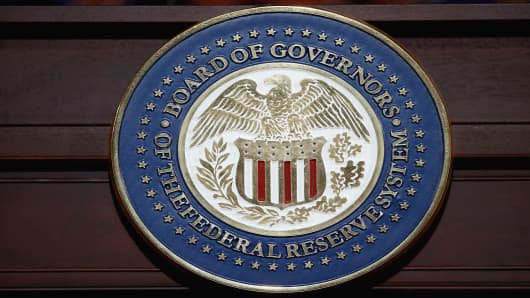The economy expanded at a slow to moderate pace in most areas of the country over the past two months, according to a Federal Reserve survey released Wednesday. A modest pickup in consumer spending, tourism and manufacturing drove the growth.
The Fed said economic conditions improved in all but one of its 12 bank districts. The one exception was the St. Louis district, where conditions declined.
Even with the growth, hiring was weak in most areas. Businesses in six of the Fed regions said they had a hard time finding qualified workers for those jobs that were open, particularly for high-skilled manufacturing and tech jobs.
Roughly 14 million people were unemployed in October.
The report, known as the Beige Book, covered the period from Oct. 8 through mid-November. The Fed's last survey said most areas reported slight improvement in September and early October. But several regions said businesses had grown more cautious and were holding back on spending.
The economy grew at an annual rate of 2 percent after nearly stalling in the first six months of the year. Recent data suggest slightly better growth in the final three months of the year.
Retailers reported strong sales over the Thanksgiving weekend, consumer confidence surged in November to the highest level since July, and Americans' pay rose in October by the most in seven months. Those all point to a strong holiday shopping period and steady growth in 2012.
Still, the European debt crisis threatens to slow U.S. growth. Such concern led the Federal Reserve and other major central banks to team upto ease the strains that the debt crisis has put on the global financial market. Their coordinated action aims to stimulate economic growth by making it easier for banks to lend to each other and to businesses by providing dollars if they need them.
Even if Europe avoids a recession , the U.S. economy is only growing enough to keep pace with population growth. Growth would need to double — consistently — to make a significant dent in the unemployment rate, which has been near 9 percent for the past two and a half years.
After its November meeting, the Fed sketched a bleaker outlook for the U.S. economy for the next two years. But it announced no new policy actions after the meeting, saying it wanted to allow more time monitor its previous steps taken. Many economists believe the central bank will leave policy unchanged again at the Dec. 13 meeting.
In September, the Fed voted to shuffle $400 billion of its investments to try to lower long-term interest rates. That has helped drive mortgage rates to historic lows.
After the August meeting, the Fed said it planned to the rate near zero until at least mid-2013, as long as economic growth remained weak. Fed officials hoped the clearer guidance would provide confidence to investors and borrowers that any rate increases were at least two years away.
The Fed has kept its key short-term interest rate at a record low near zero since December 2008. That is the rate that banks charge on overnight loans and serves as the benchmark for millions of business and consumer loans.


